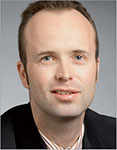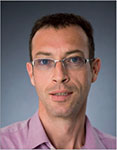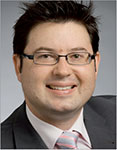Methodology for environmental impact assessment of underwater noise on marine mammals
Dick Petersen A , Antoine David A and Darren Jurevicius AAECOM
The APPEA Journal 51(1) 467-478 https://doi.org/10.1071/AJ10030
Published: 2011
Abstract
The oil and gas industry uses some exploration and production technologies that produce high levels of underwater sound, such as seismic surveys, underwater blasting for demolition and construction, and offshore piling. These underwater noise sources have the potential to impact marine species, which are usually reliant on sound instead of light as their primary sense for communication and sensing their environment. Regulatory interest in minimising the impacts of underwater noise on marine fauna is increasing. This paper presents a methodology for assessing these environmental impacts, with particular focus on cetaceans (whales and dolphins) and pinnipeds (seals and sea lions), although it can easily be adapted to other marine mammal species and fishes. It requires input from a variety of fields, such as: underwater acoustics for sound propagation modelling and source noise characterisation; marine bio-acoustics for determining the effects of sound on marine species’ hearing and communication; and marine ecology for identifying the marine species that may be affected and assessing the biological importance of noise-affected marine areas. These inputs are used in a risk assessment to assess the likely impacts of underwater noise on marine species, which is a collaborative effort by specialists in the fields of underwater acoustics, marine bio-acoustics and marine ecology.

Dr Dick Petersen commenced work with AECOM in July 2007 after completing a PhD on the topic of virtual acoustic sensors for the active control of sound. Dick has worked on a broad range of architectural acoustics, environmental, and industrial noise control projects. His skills are underpinned by a strong technical grounding in applied mathematics and signal processing, which has led Dick to also develop a specialist capability in underwater acoustics analysis. Dick has authored several international journal and conference articles on active control of sound. Member: MAAS, MASA. dick.petersen@aecom.com |

Dr Antoine David has over 18 years experience as an acoustics consulting engineer leading a wide range of specialist acoustic and vibration projects. He worked as a senior scientist for the Defence Evaluation Research Agency (DERA) for five years on underwater acoustics projects. DERA (now QinetiQ) was an agency of the UK Ministry of Defence. Antoine carried out underwater noise impact assessments for marine mammals and fishes while at the UK Ministry of Defence, including UK sea trials involving medium frequency sonar, low frequency sonar, and underwater blasting. He has also carried out assessments for petrochemical companies (BP, Phillips66) and other companies (Hanson) for environmental impact assessments of underwater sound on marine mammals and fish. antoine.david@aecom.com |

Darren Jurevicius has a global role in AECOM to lead and develop the underwater noise capability, and as such he has a key involvement in all underwater noise projects. Darren has 15 years experience as a consulting engineer having led a wide range of acoustics and vibration projects nationally for all major industry sectors, including the giving of expert evidence. He recently led the preparation of an underwater piling noise guideline on behalf of the South Australian Department for Transport Energy and Infrastructure (DTEI), which outlines a process for assessing underwater piling noise impacts on marine fauna in state waters. darren.jurevicius@aecom.com |


